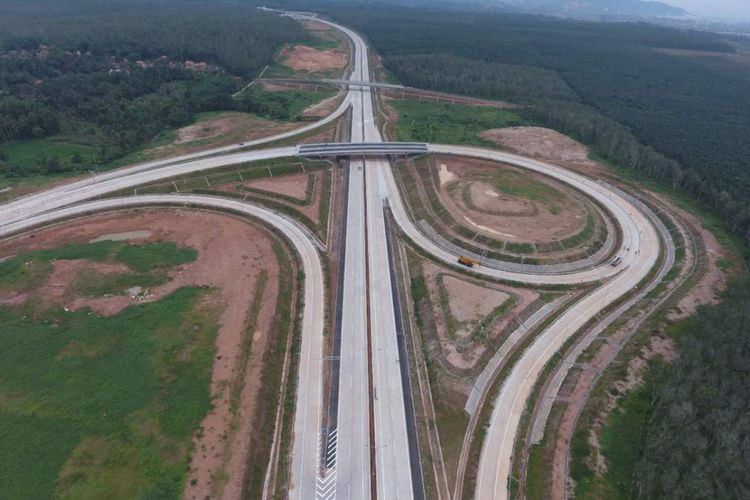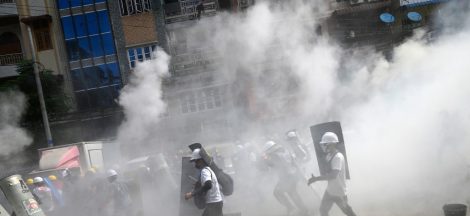Infrastrucure, human resources highlight 2020 state budget spending. The 2020 draft state budget unveiled by President Joko “Jokowi” Widodo during a House of Representatives (DPR) plenary meeting last Friday highlighted his commitment to continuing to improve the country’s infrastructure and human resources.

The government’s total expenditure is projected to reach Rp2.52 quadrillion (US$177.31 billion) in the 2020 draft state budget, up 7.9 percent from Rp2.34 quadrillion in 2019. About 70 percent of the funds will be spent by the central government while the other 30 percent will be transferred to regional administrations.
Of the total, the budget allocation for health care is projected to increase by 13 percent year-on-year (yoy) to Rp132.2 trillion in 2020, most of which will be used to strengthen preventive healthcare programs through the healthy lifestyle movement (Germas) and to strengthen early childhood health programs to fight the prevalence of stunting, among other priorities.
The budget allocation for education, which accounts for 20 percent of overall spending as required by law, is projected to rise by 5.7 percent yoy to surpass the half-a-quadrillion mark, totaling Rp505.8 trillion, driven by the government’s initiative to extend the Indonesia Smart Card (KIP) program to the tertiary education level as well as the establishment of several endowment funds, such as research endowment funds and cultural endowment funds, among others.
The budget allocation for infrastructure development, meanwhile, is projected to increase by 4.9 percent – the highest increase since 2017 – to Rp419.2 trillion.
University of Indonesia (UI) economist Ari Kuncoro said the spending allocations proposed by the government in the 2020 draft budget reflected that the government was still keen to spend big on infrastructure in addition to human resource development next year.
“We cannot lower infrastructure spending. It is very important because it can generate [multiplier] effects for the people,” said Ari, adding that Indonesia still needed more rural roads to connect toll roads to villages to open up new sources of economic growth.
The budget allocation for social development is projected to increase by 4 percent yoy to Rp385.3 trillion to support the government’s plan to issue food cards, one of Jokowi’s promises during his campaign ahead of April’s election. The food cards will give poor people access to food assistance. In addition, the social development funds will also be used to finance the Family Hope Program (PKH) and other social welfare programs that Jokowi has implemented in his first term.
Maybank Indonesia economist Myrdal Gunarto said the continued increases in education, social welfare and infrastructure spending signaled the government’s commitment to boost domestic consumption, which is expected to strengthen economic growth amid the country’s sluggish export performance.
“The increase in the budget allocation for education is expected to improve the quality of Indonesia’s human resources”, Myrdal added.
Despite the emphasis on human resource development, the Defense Ministry will receive the largest budget allocation of Rp127.4 trillion, up 16.24 percent from Rp109.6 trillion this year.
The ministry will overtake the Public Works and Housing Ministry as the biggest recipient of state funds, with the latter only set to receive Rp 120.2 trillion next year.
Finance Ministry Budgetary Director General Askolani said the Defense Ministry’s budget was increased to cover increased maintenance spending for the country’s major weapon systems, among other costs.
He added the budget allocation increases for central government institutions were calculated on the basis of the institution’s proposed programs.
“We encourage [spending] based on needs,” he said. “We will not allocate [additional funds] if there is no reason to do so.”
In line with next year’s strategy of “spending better”, Askolani said the government would continue to monitor the budget to control routine spending, such as for official trips and meetings, while also encouraging the disbursement of funds for productive programs, particularly those centered on human capital, infrastructure, social welfare and health care development. Infrastrucure, human resources highlight 2020 state budget spending (Marchio Irfan Gorbiano, The Jakarta Post)





 Jantung Mendadak Berhenti Berdetak, Apa Lampu LED dan Tikar Membantu?
Jantung Mendadak Berhenti Berdetak, Apa Lampu LED dan Tikar Membantu? 